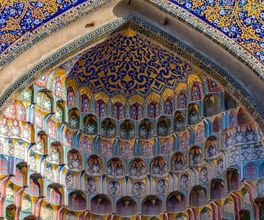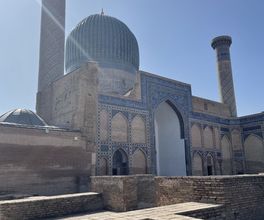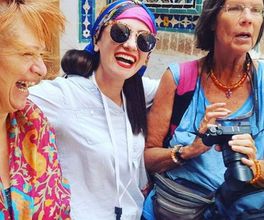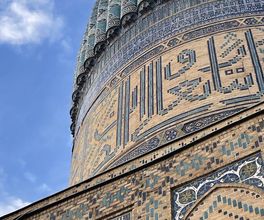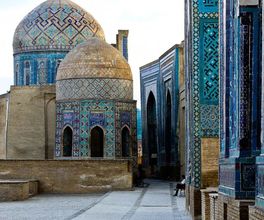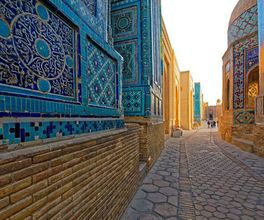




About this experience
Visiting Samarkand usually revolves around exploring the sights of the Timurid era. However, the city holds a much older history dating back to the 7th century BCE, as evidenced by the ruins of Afrasiab. Walking through the archaeological complex, you will delve into pre-Islamic times and learn about the origins of the Pearl of the East. Afterwards, you will proceed to explore the monuments of a period when Samarkand flourished as a center of Islamic scholarship and became the birthplace of the Timurid Renaissance.
What to Expect
The Great Ancestor of Samarkand
Our city emerged around the same time as the legends of the Ancient world: Rome and Athens. However, it received its current name and territorial boundaries much later. On the northern outskirts, you will visit the ancient settlement that marked the beginning of Samarkand's journey. You will hear about the times when it was Marakanda, the capital of the 'land of gardens and wonders' of Sogdiana. You will try to envision the ancient citadel as you stroll through the hills of Afrasiab. You will also learn about the artifacts stored in the Museum of Samarkand's Foundation History, which boasts over 15,000 exhibits, including coins from the time of Alexander the Great, arrows, knives, Zoroastrian burials, remnants of walls, and more.
Medieval Heritage of the Middle East
We will then move to the heart of Samarkand, to the Registan Square, where you will encounter legendary structures from the 15th century.
- In the Gur-Emir Mausoleum, I will share facts about Timur's biography and how he rose from nothing to become the ruler of three continents. We will also discover who rests in his tomb.
- While examining the madrasas, we will discuss the educational system of the 15th-17th centuries.
- In the cathedral mosque of Amir Timur – Bibi-Khanym – you will learn about one of the first experimental constructions, the risks taken by the builders in erecting such high walls, and appreciate the grandeur of the once largest mosque in Central Asia, which attracted Muslims from around the world.
- In the Ulugh Beg Observatory, you will examine valuable astronomical instruments that were used to calculate the coordinates of stars and the number of days in a calendar year without a telescope.
- And at the first mosque of Samarkand, Hazrat-Khyzr, built with the arrival of the first Arabs in the 8th century, I will tell you the legend of the prophet and sorcerer who tested people for generosity and reveal one of the local traditions.
Logistical Details
Visiting the Afrasiab settlement is free of charge, entrance to other sites is paid separately on-site – $3/person.

